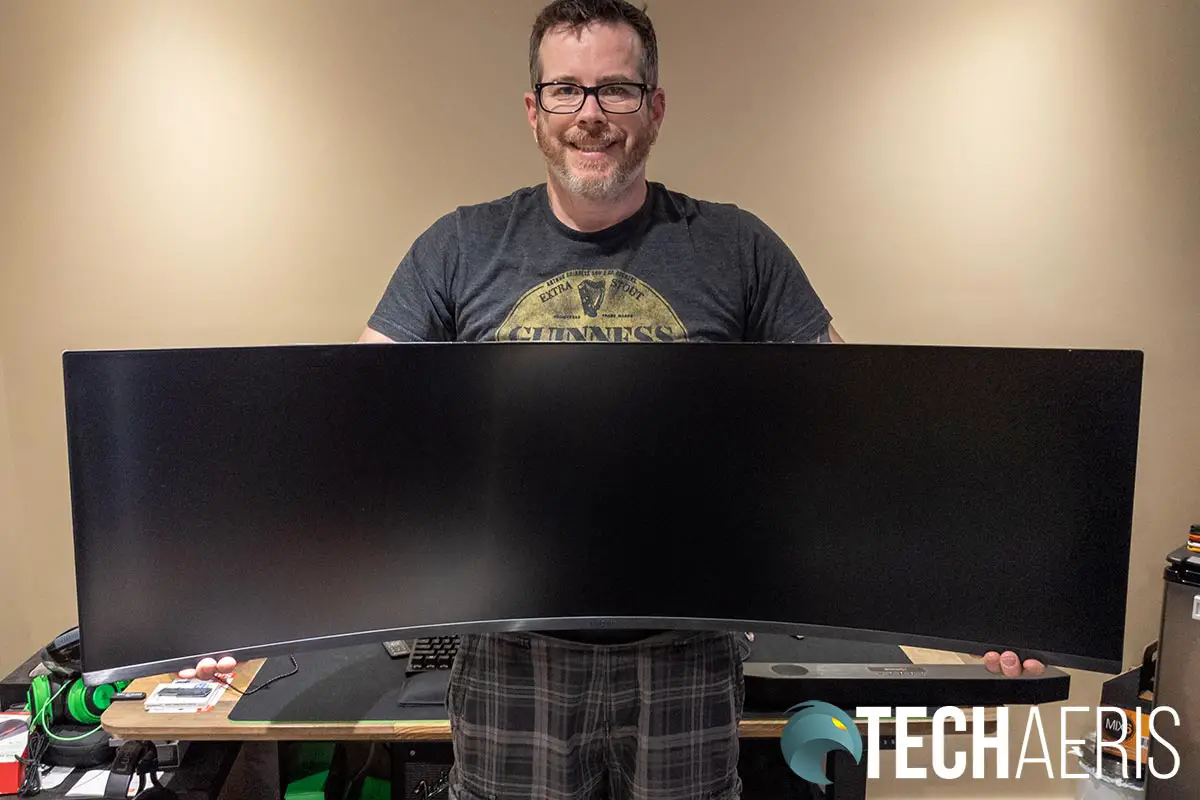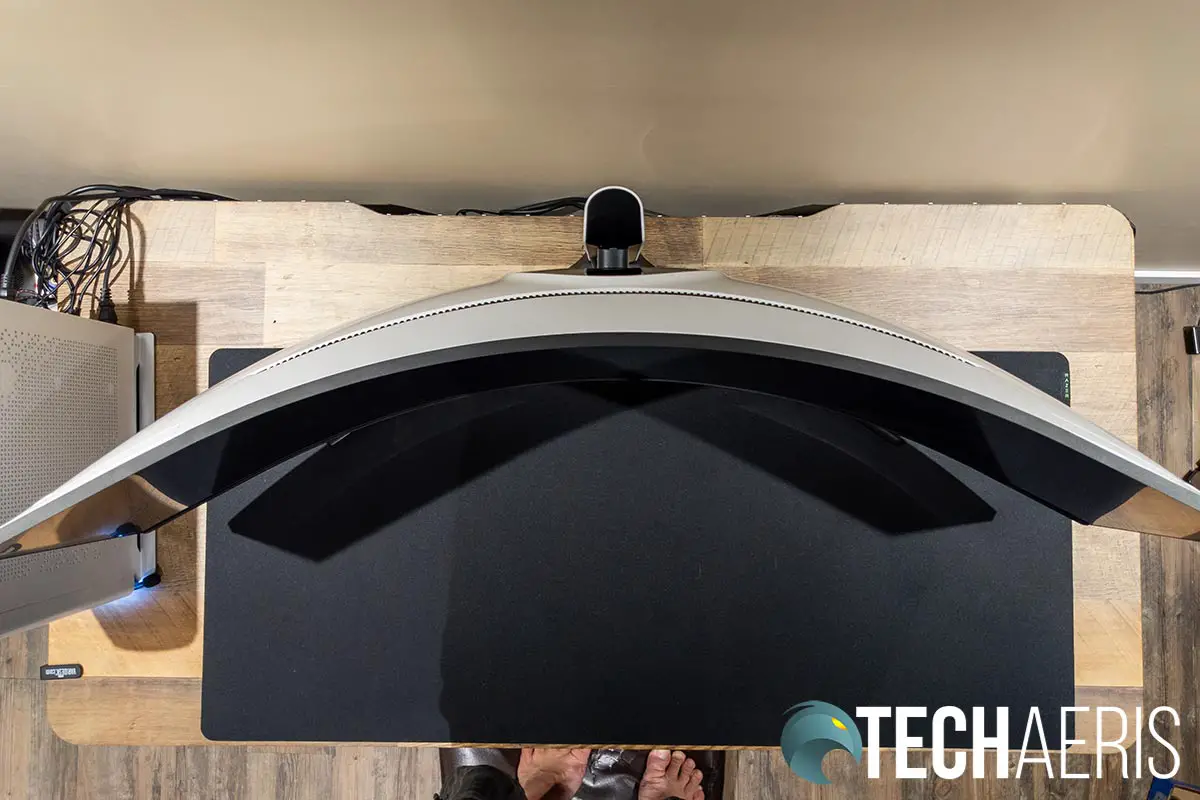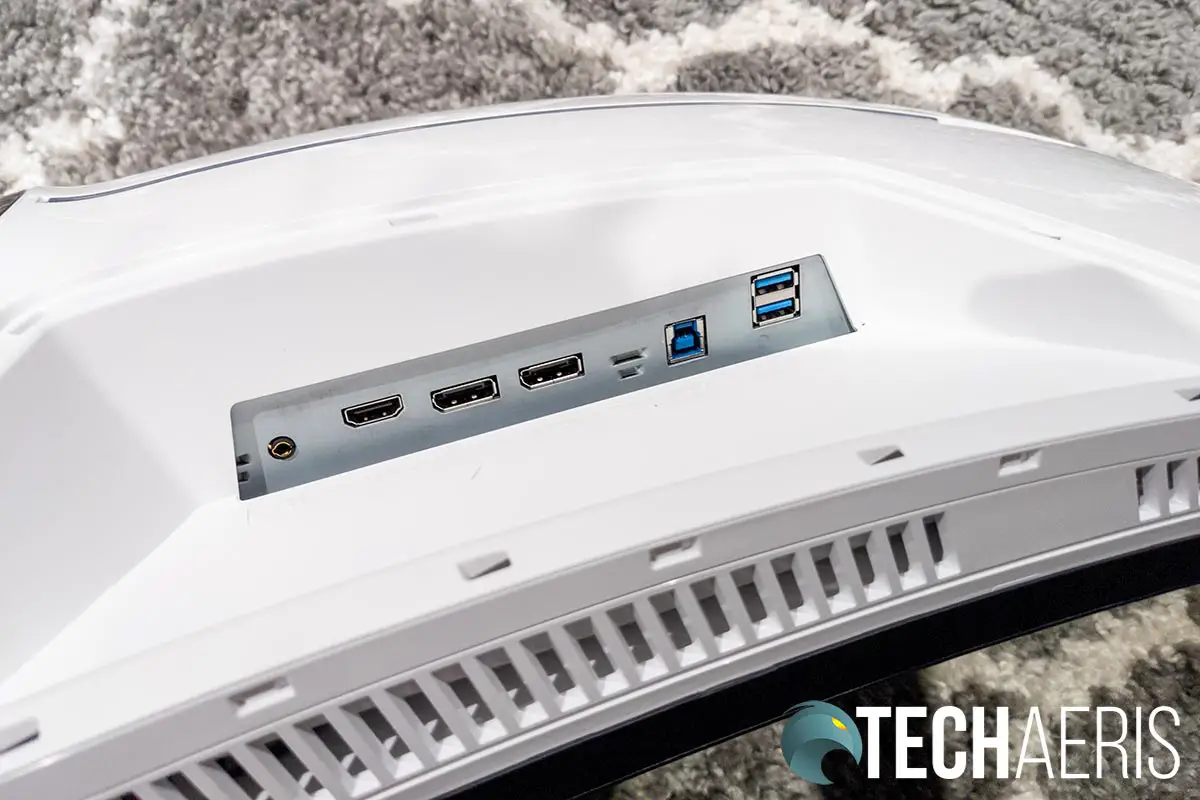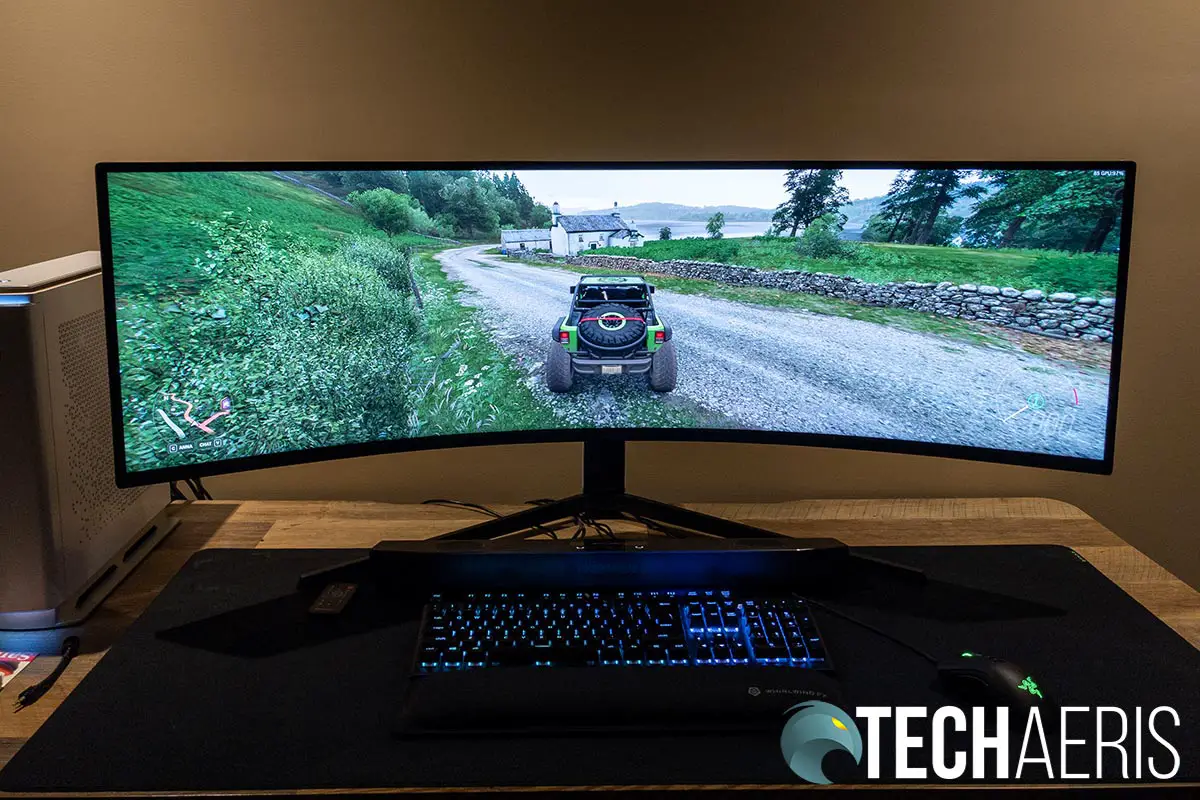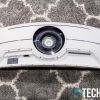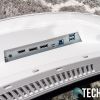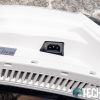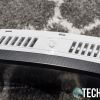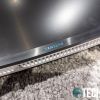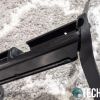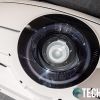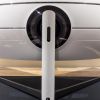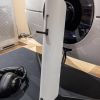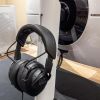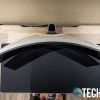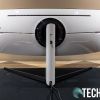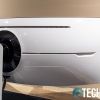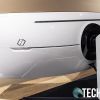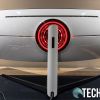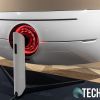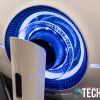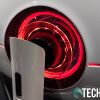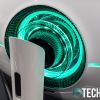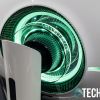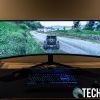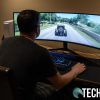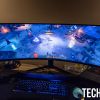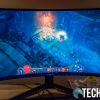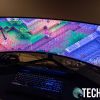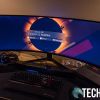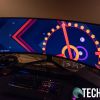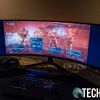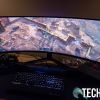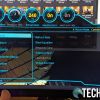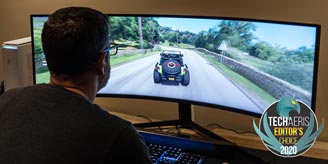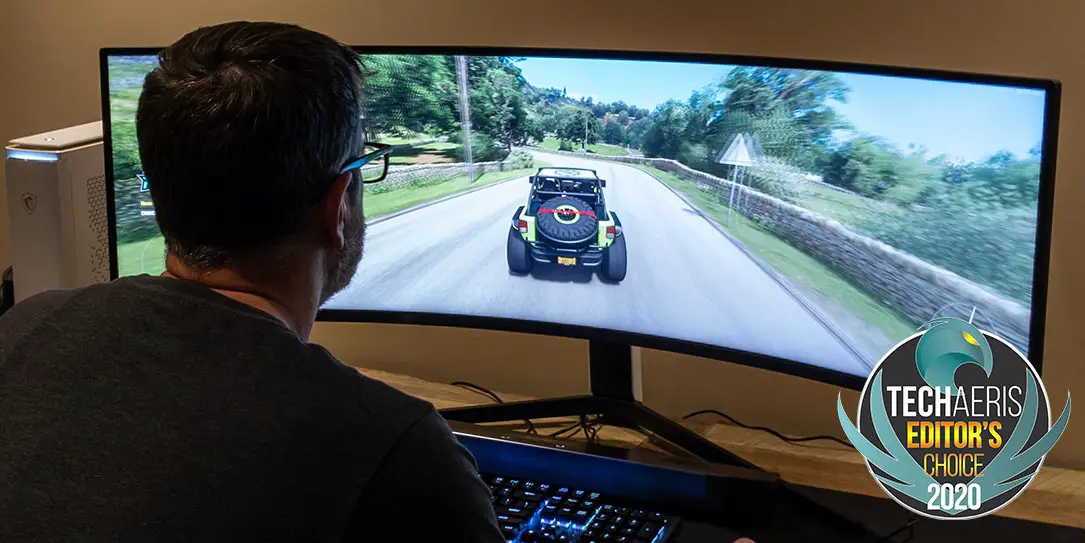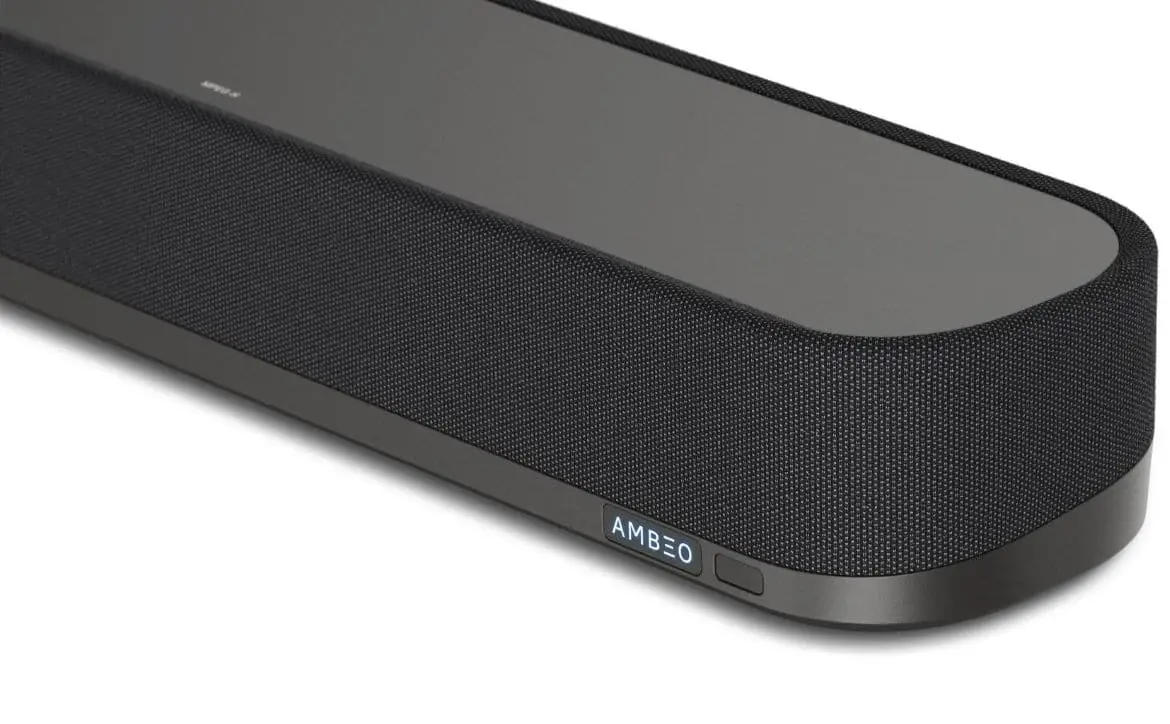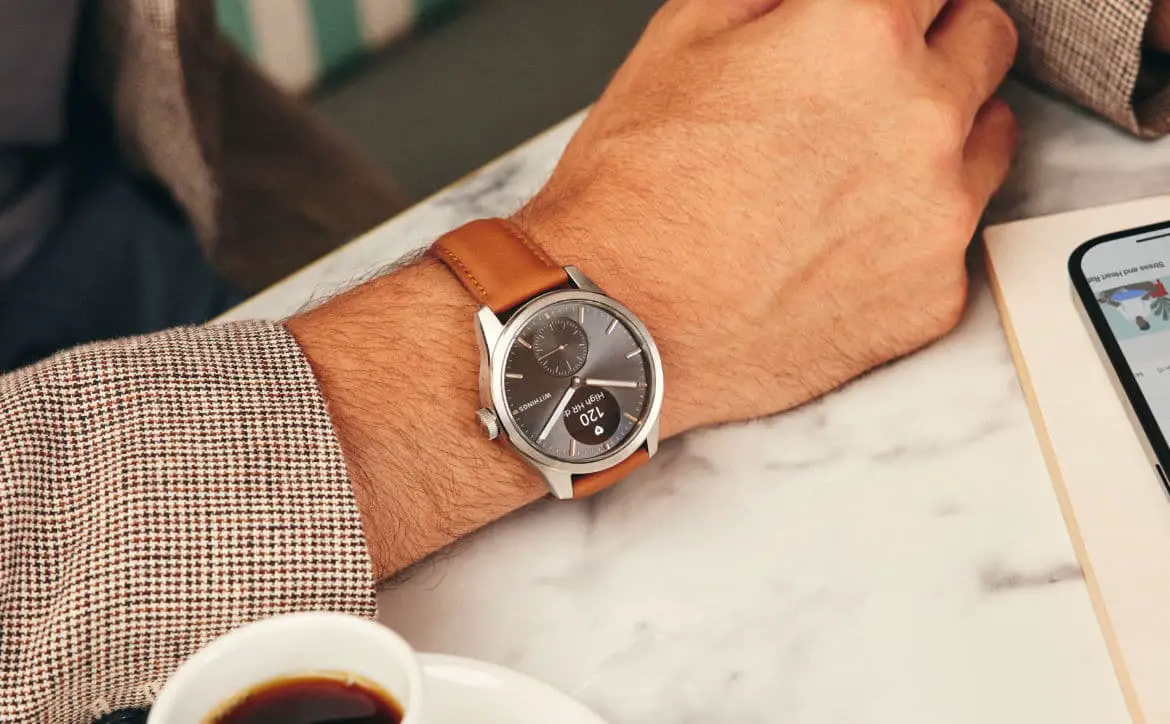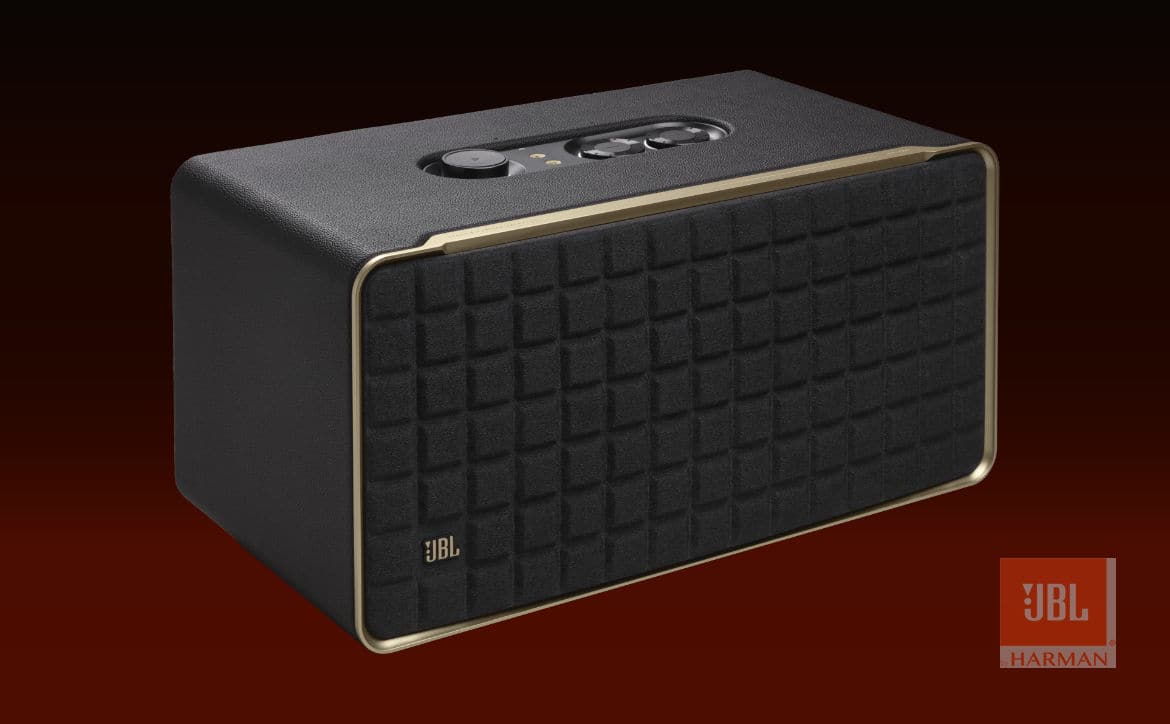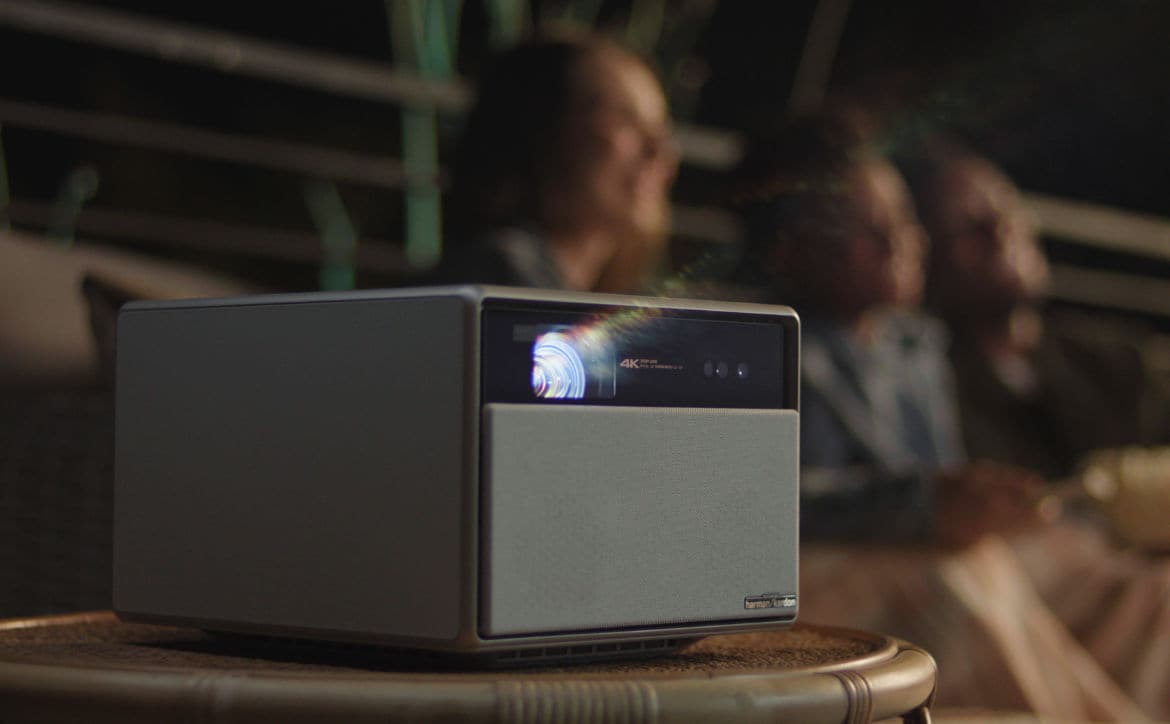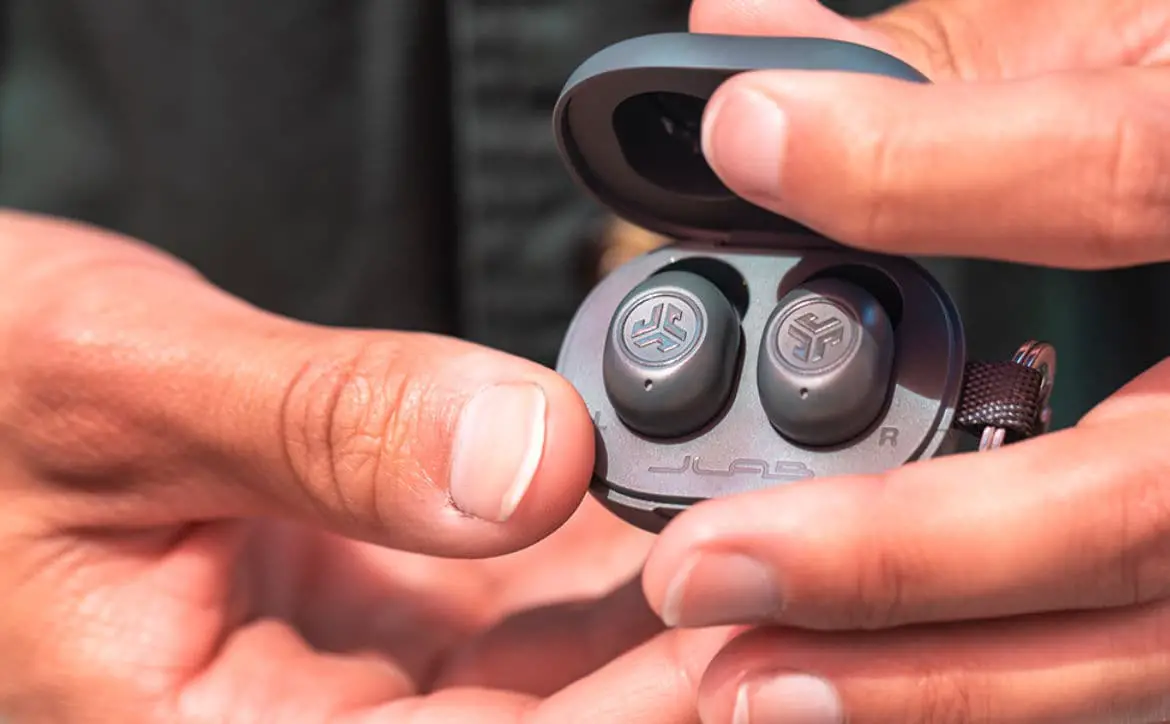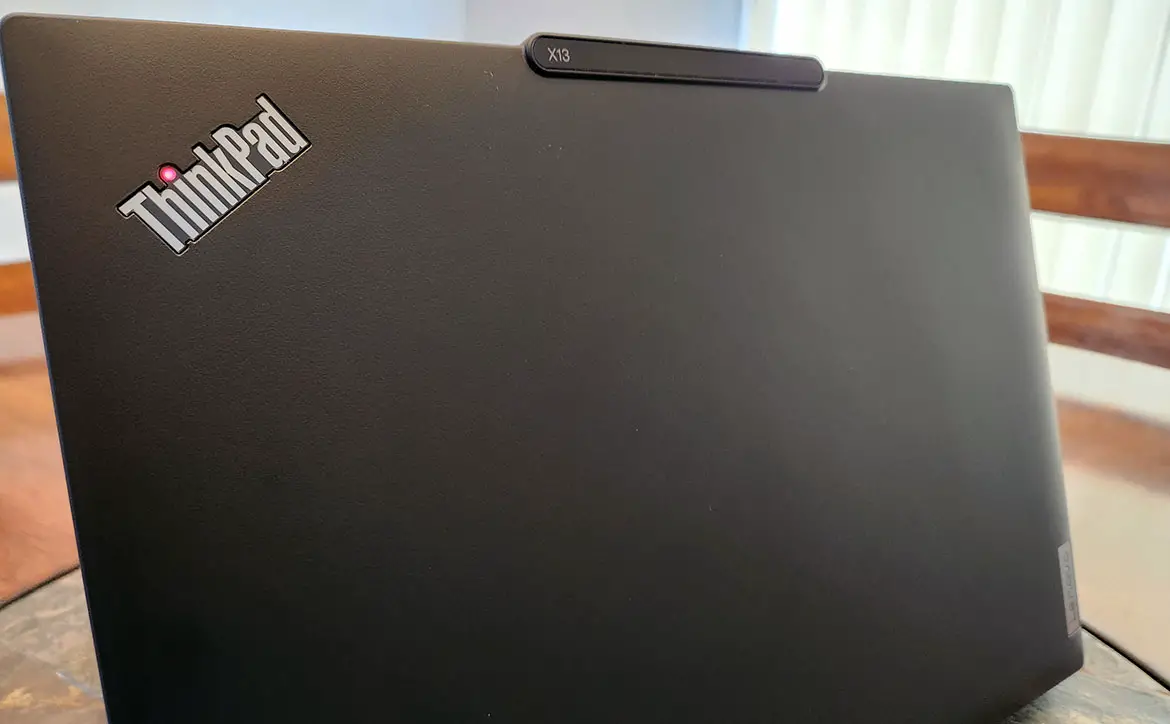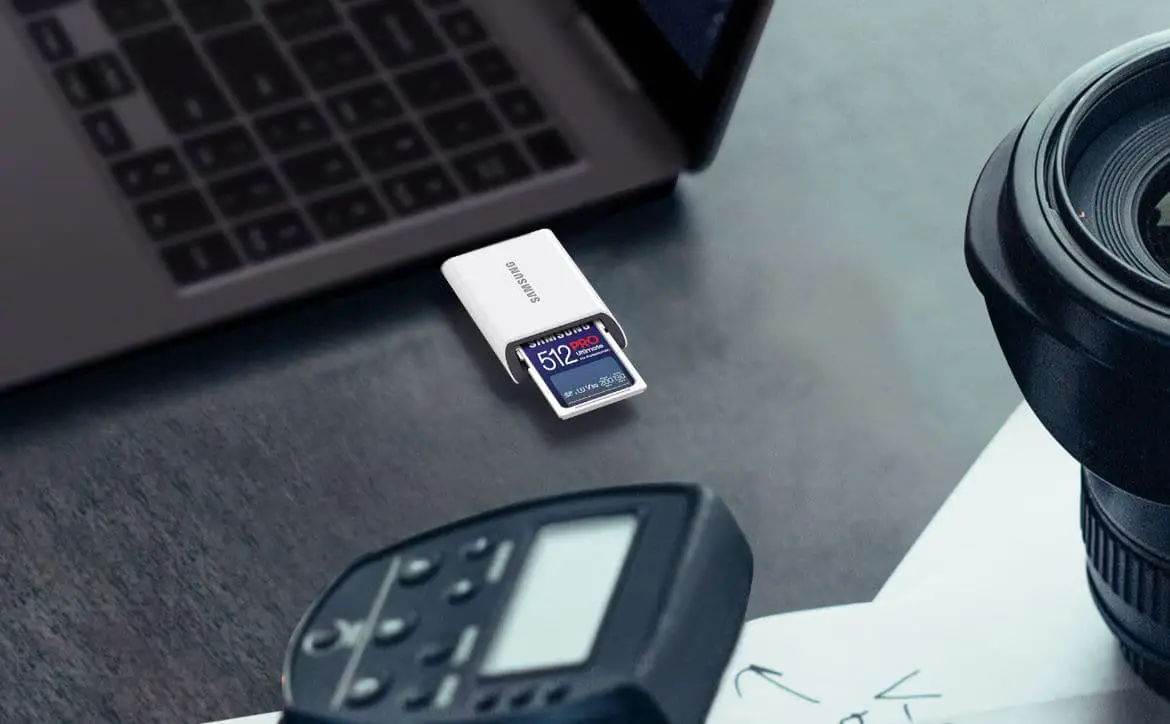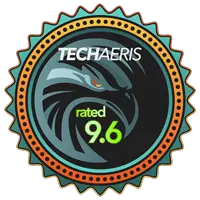
We first saw the Samsung Odyssey G7 and G9 gaming monitors back at CES 2020. Last month, we reviewed the Samsung Odyssey G7 32″ gaming monitor and found it worthy of a Top Pick Award. Shortly after that review, we had the opportunity to take the monstrous Odyssey G9 49″ version for a spin as well.
Estimated reading time: 14 minutes
With the same 1000R curvature, 240Hz refresh rate, and super-fast 1ms response time of its smaller counterpart, the larger Odyssey G9 is for serious gamers. Our Samsung Odyssey G9 review looks at this massive 49-inch curved gaming monitor from the company that offers gamers an entirely new level of immersive gaming. Read on to find out why it earned a 2020 Editor’s Choice Award here at Techaeris.
NOTE: Be sure to check out our review on the updated Samsung Odyssey Neo G9 49″ gaming monitor.
Table of contents
Specifications
The Samsung Odyssey G9 has the following features and specifications:
| Model | LC49G95TSSNXZA |
| Screen Size | 49 inches (48.7 actual) |
| Panel Type | VA |
| Display Type | QLED |
| Aspect Ratio | 32:9 |
| Max Resolution | 5120 x 1440 (Double QHD) |
| Curvature | 1000R |
| PPI | 108.97 |
| Brightness | 1000cd/m² (peak) 420cd/m² (typ) 300cd/m² (min) |
| HDR | HDR 1000 |
| Native Contrast | 2500:1 (typ); Dynamic Contrast Ratio |
| Viewing Angle | 178°(H)/178°(V) |
| Tilt | -3.0° ~ +13.0° |
| Swivel | -15.0° ~ +15.0° |
| Height Adjustment (distance) | 120mm (4.72 inches) |
| Response Time | 1ms (GtG) |
| Refresh Rate | 240Hz |
| Display Colors | 1.07 billion (max) |
| Color Gamut | 95% DCI (Typical) 88% NTSC 1976 (Typical) 125% sRGB (Typical) 92% Adobe RGB (Typical) |
| Backlight Type | LED |
| Inputs/Outputs | 2x DisplayPort, HDMI, 3.5mm Audio, USB Hub, 2x USB Type-A |
| Horizontal Frequency | 71.04kHZ~357.6kHZ |
| Vertical Frequency | 60~240Hz |
| Power Consumption | 140W (max) |
| Power Supply Type | AC 100~240V |
| Dimensions (with stand) | 1147.57 x 537.21 x 416.306mm (45.18 x 21.15 x 16.39 inches) |
| Weight (with stand) | 16.69kg (36.8lbs) |
| Additional Features | • Wall Mount (100x100mm) • Picture-in-Picture • Picture-by-Picture • Eye Saver Mode • Refresh Rate Optimizer • Super Arena Gaming UX • G-SYNC compatible • FreeSync compatible • Black Equalizer • Low Input Lag Mode • Infinity Core Lighting |
What’s in the box
- Samsung Odyssey G9 gaming monitor
- Power cable
- HDMI cable
- DisplayPort cable
- USB cable
Design
Like the Odyssey G7, the aesthetic leaves no question the Samsung Odyssey G9 is a gaming monitor — and even more so. With a sleek design, it reminds me a bit of a spaceship, like something out of Star Trek. If you want to make a statement with your gaming setup, this is the monitor to do it with.
Featuring a 1000R curvature, the same metric that matches the human eye, the curve is really pronounced on the 49-inch display. Just over 45-inches wide, the monitor is just over 16-inches in depth so you’ll need a rather large desk to accommodate it. The bezels on the front aren’t too pronounced with the bottom bezel being slightly thicker. Centered on the bottom bezel is the Samsung logo in silver. Instead of being centered, the power and menu toggle button is located about one-quarter of the way from the right side of the monitor.
The back of the monitor is a nice bright white with vent fins near the top and accent lines across the middle and the corners. Like the Odyssey G7, the middle of the monitor has a roughly 6-inch circle in it for the LED core. While this does light up, when placed against a wall, it doesn’t reflect the lighting as well as the G7 did. However, should you be able to set it up somewhere where others can see the back, it is a wicked-looking effect.
Underneath the core, recessed into the back of the monitor, are the usual ports. To the left of the core, when looking at the back of the monitor, is a standard power plug. On the right of the core is where you’ll find the rest of the ports. These are the 3.5mm audio jack, HDMI port, two DisplayPorts, USB hub, and two USB Type-A ports. Once you have everything plugged in, there is a cover that snaps in and hides the cables and completes the unobstructed look of the back of the monitor. The cover has a smallish rectangular cut out near the top in the middle for cable management.
The stand itself comes in three pieces and weighs over five pounds, which is needed to hold the monitor sturdy when on a desk. The feet attach to the main stand and then a white curved cover slides down over the back, covering it. The main stand portion has a cutout near the bottom and recessed grooves in it along the back towards the bottom. This is where the cables from the back of the monitor can be laid guided through and covered for tidy cable management. Unlike the Odyssey G7, this is a much nicer system and can accommodate more cables. Once attached, the stand allows the monitor to tilt up and down, swivel left and right, and finally raise or lower.
There’s no missing this monitor once it’s set up. Even though it is large, it looks great sitting on your desk beside (or in front of depending on your desk size) your gaming rig. It turns heads, especially once it’s turned on.
Display
I’ll just go over this bit from our Odyssey G7 review before I continue. Before I go into specifics on this model, why would someone want to use a curved monitor? Well, when you think about it, the human eye isn’t flat, it’s curved. In fact, the curvature of the typical eye is indicated by the number 1000R. 1000 is the number of millimeters and the R is for radius. When combined, they indicate that the radius the curve, in this case, the monitor, will be 1000mm when completing a perfect circle. When using a flat monitor, especially a larger or widescreen one, your eye must adjust as it scans to the left and right edges of the screen. This can cause eye strain and fatigue, especially after longer periods of sitting in front of a screen. Samsung has a decent write up on their website as to the advantages of curved versus flat monitors.
That out of the way, you’re going to have to pardon me for a minute here but… OMG, THAT DISPLAY. With that out of my system, the display on the Samsung Odyssey G9 gaming monitor is just under 49-inches diagonal, has a 32:9 aspect ratio, and 1000 nits of peak brightness. When turned on, the display is indeed bright, and is also crisp and clear given the size and it’s double QHD (5120 x 1440) resolution. While you might wish for a higher resolution on a monitor of this size, QHD is more than adequate and I’ll explain a bit more in the performance section.
While the 1000R curvature took a bit to get used to on the G7, as soon as you sit down in front of the G9, you are fully immersed. In my case, when looking straight at the screen, I could barely see the left and right edges of the monitor. For games like Forza Horizon 4, Call of Duty: Warzone, and Gears 5, the action really was immersive. For more tactical/hack ‘n slash type games like Diablo III and Gears Tactics, the extra real estate really opened up the worlds and levels. On that note, not every game played nice with the double QHD display, but I’ll hit that in the performance section below.
With a VA QLED display panel, the display is clear and crisp. The colours on the display are pretty rich with the default setting. In addition, the monitor supports 1.07 billion colours and 95% DCI, 88% NTSC 1976, 125% sRGB, and 92% Adobe RGB colour profile coverage. As is characteristic of this panel type, the contrast is very decent with a standard 2500:1 and dynamic contrast settings.
As with any decent monitor, there are quite a few settings that you can customize to your liking. To access the onscreen menu, simply wiggle the power button toggle on the underside of the monitor. It will bring up a menu panel with four options, selecting up will allow you to access the menu. selecting left will switch inputs, selecting right will toggle PIP/PBP mode, and selecting down will power the monitor off.
Monitor settings include:
- Game: Refresh Rate, Black Equalizer, Response Time, Adaptive-Sync, Low Input Lag, Virtual Aim Point, Screen Size
- Picture: Picture Mode (Custom, High Bright, FPS, RTS, RPG, AOS, sRGB, Cinema, Dynamic Contrast), Brightness, Contrast, Sharpness, Color, Black Level, Eye Saver Mode, Screen Adjustment
- PIP/PBP: PIP/PBP Mode (On/Off), Mode Type, Screen Size, Screen Position, Source, Sound Source, Screen Ratio, Contrast
- OnScreen Display: Language, Display Time
- System: Core Lighting (Front & Back, Back, Off, Light Effect), Local Dimming, Volume, Dynamic Brightness, Off Timer Plus, PC/AV Mode, USB Super Charging, DisplayPort Ver., Input Port Ver., Auto Source Switch, Key Repeat Time, Power LED On
- Support: Shows model, serial number, software version, HDR/Adaptive-Sync status, resolution, source, and refresh rate
As you can see, there are plenty of different options to customize the monitors’ functionality and display. To be honest, while I did toggle through the different Picture Mode settings, I settled on sRGB with a reduction in the brightness and was pleased with the “out-of-the-box” display settings for general use and gaming.
I did notice a bit of backlight bleed when the monitor was idle. It wasn’t much but is slightly visible about one-quarter of the way in from each edge on the top and bottom. While being immersed in my gaming sessions, I didn’t notice it all, regardless of the lightness or darkness of the gaming environments I was currently in.
At the end of the day, every time I sat down to game while using this monitor, I couldn’t help but smile while doing so based on the picture quality and the immersive experience the larger curved display provides.
Assembly
Set up of the Samsung Odyssey G9 monitor is easy, however, due to the size, moving it works best with two people. The legs get attached to the arm and tighten by way of a screw with a handy loop on it. Next, the top of the arm slides into the back of the monitor and is screwed into place (you’ll need a screwdriver for that). Finally, the translucent core ring splits in two and snap it in place around where the monitor attaches to the arm. All said and done, you should be up and running with your new monitor in 10 minutes once you’ve unpacked it from the box.
Performance
The extra real estate is definitely nice but I did find the monitor a bit harder to use for basic office tasks as opposed to my 35-inch 1800R curved monitor. For gaming though, which is the target market for this monitor, the monitor pushed the limits of the system I was testing it on. That system has an MSI RTX 2080 TI GPU, 64GB of RAM, an Intel Core i9-9900K CPU, and SSD hard drives. Even still, it had a hard time maxing out that refresh rate with a matching frame rate with games set to their best settings. That’s not necessarily a bad thing as the monitor will be able to handle the next generation of video cards due out.
With Gears 5, I was able to hit just over 60 fps on maximum settings. Forza Horizon 4, on the other hand, tapped out at 90 fps on Ultra settings. Diablo III did average the high 180s for frame rate, but that’s expected given the age and style of the game. Sure, you can lower the image quality to get higher framerates if that’s what you wish. Personally, I prefer higher-quality graphics for most games but would opt for a slightly reduced graphics quality for higher framerates for multiplayer shooters. Regardless, at the framerates I was getting, the games I tested all ran nice and smooth. In fact, Hyperdot ended up being one of my favourite games to play on the monitor due to the extra immersion factor.
As mentioned above, not all games adapt properly to the double QHD resolution natively. Heroes of the Storm, which I can run just fine full screen on the 35-inch UWQHD screen (3440 x 1440) with extra fog of war on the right and left sides, wouldn’t let me select 5120×1440 as a resolution. Even at the maximum resolution that I could select, the image was stretched and not suitable for playing. In the end, I was only able to set it to windowed fullscreen mode at 3440 x 1440 and played it with the desktop showing on the left and right of the window. On that note, as pointed out by Benjamin in the comments below, if you have an NVIDIA video card, you can force the 5120×1440 for Heroes in the GeForce Experience app. Simply go to the games tab, select Heroes, click optimize and you should be good to go. You can also manually set the desired resolution for the game manually as well. Once I did this, the game ran just fine full screen. Thanks for the tip Benjamin!
The other game that ran a bit subpar is the recently released Minecraft Dungeons. In this case, while the game plays full screen, it looks as though it is scaled to width so the top and bottom of the game are cropped out. This isn’t apparent in the menu screens but during actual gameplay, there is way less field of view than on other monitors with more standard aspect ratios.
As the games don’t support the double QHD resolution, it’s no fault of the monitor itself. Hopefully, Blizzard and Mojang (and other developers) update their games to properly support higher and newer resolutions to assist with more immersive gaming. As a result, you can’t really ding the monitor itself on performance as any game that supported its native resolution ran just fine.
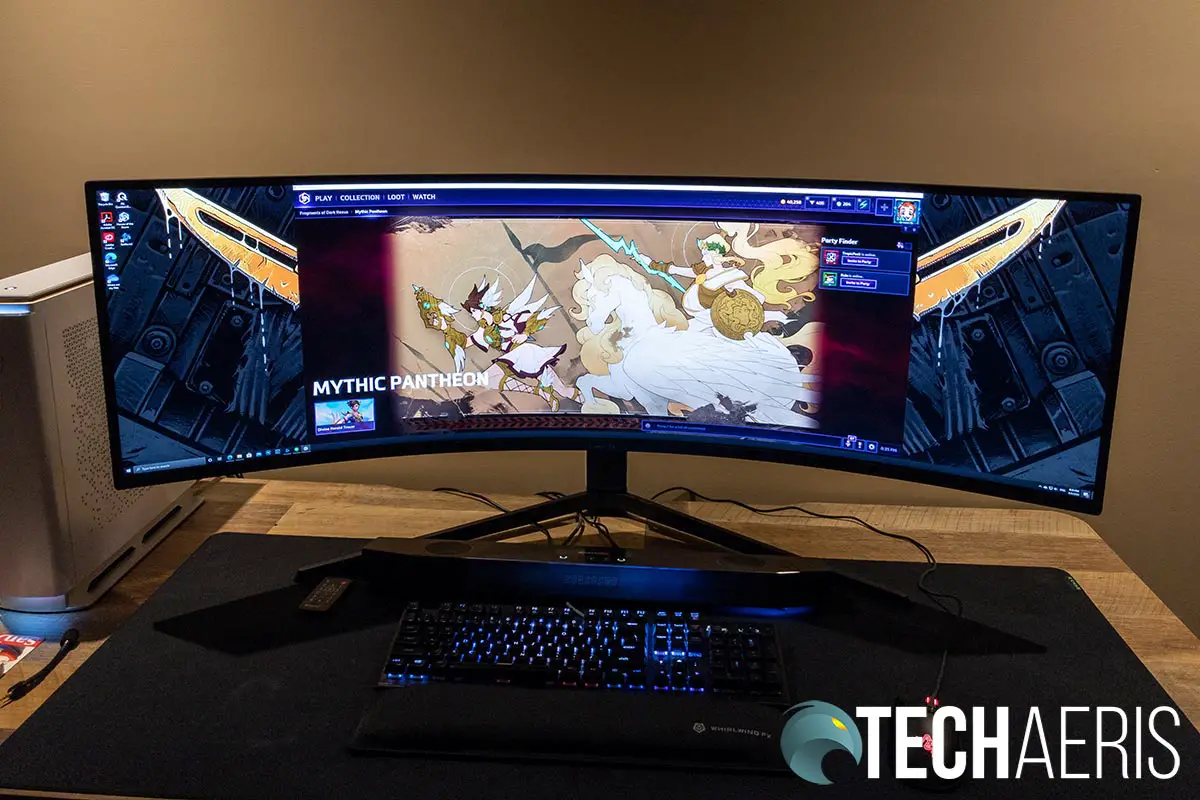
As with any monitor with HDR support these days, that is a bit hit and miss as Windows 10 doesn’t really do well with it. That said, games that do support it, like Forza, looked extra gorgeous while playing with HDR enabled on this monitor.
Price/Value
With an MSRP of US$1699.99, the Samsung Odyssey G9 isn’t exactly cheap and may even cost you more than your desktop rig. That being said, it really does pack a punch with both design and performance. There aren’t many 49-inch curved monitors on the market now, much less with these gaming specs. As such, there isn’t much to compare it to price-wise, but you will be dropping an extra $300-400 for the extra features over last year’s Samsung 49” curved model and the competing products we could find. With NVIDIA G-Sync and AMD FreeSync support, 240Hz refresh rate, 1ms response time, and a host of other gaming features — not to mention the insane real estate — this monitor should last you for a few years should you pick it up.
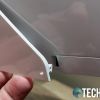
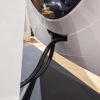
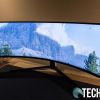
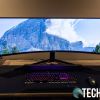
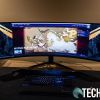
Wrap-up
If you can afford it, the Samsung Odyssey G9 gaming monitor is the gaming monitor to have right now. Fast 240Hz refresh rates, 1ms response time, a crazy amount of real estate, great performance, and immersive gaming with its 1000R curvature help the Odyssey G9 set the bar for immersive gaming. There’s no question it’s deserving of a 2020 Editor’s Choice Award here at Techaeris. This is one monitor I’ll be sorely missing after I send it back to Samsung.
In some of our articles and especially in our reviews, you will find Amazon or other affiliate links. Any purchases you make through these links often result in a small amount being earned for the site and/or our writers. Techaeris often covers brand press releases. Doing this does not constitute an endorsement of any product or service by Techaeris. We provide the press release information for our audience to be informed and make their own decision on a purchase or not. Only our reviews are an endorsement or lack thereof. For more information, you can read our full disclaimer.
Last Updated on February 6, 2023.
Samsung Odyssey G9
US$1699.99Nailed it
- Sleek "futuristic" design
- Fantastic colours with the VA QLED panel
- Fast 240Hz refresh rate for gaming
- Extremely bright
- 1000R curvature is very immersive at this size
- Includes HDMI, DisplayPort, and USB hub cables
- Future proof due to pushing limits of existing desktop systems
Needs work
- Not every game plays nice with double QHD resolution
- Rear LED core ring not as bright a glow as on Odyssey G7
- OCD gamers with other LED lighting might want a syncing option
- Takes up a huge amount of space
- Hefty price tag (but worth it if you can afford it)
- Minor backlight bleed on top and bottom edge

